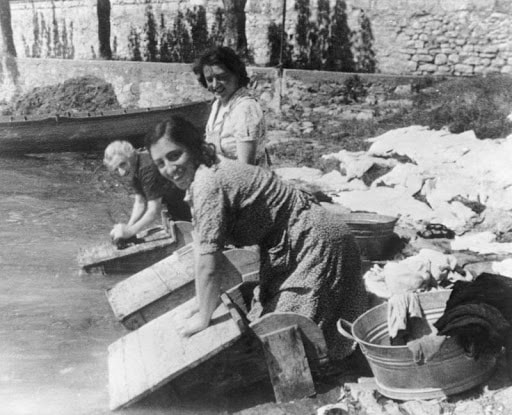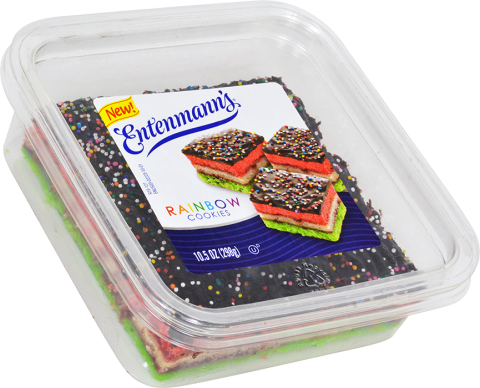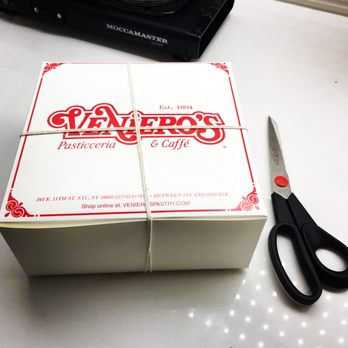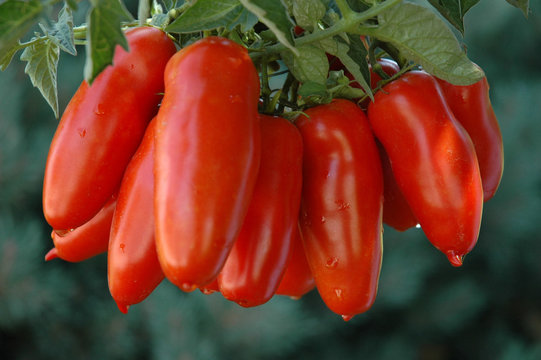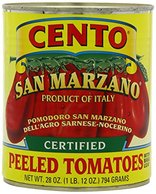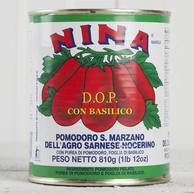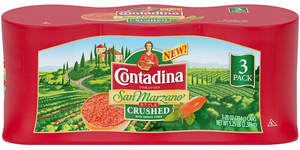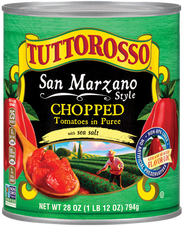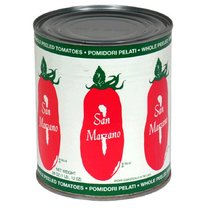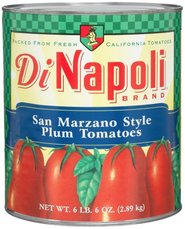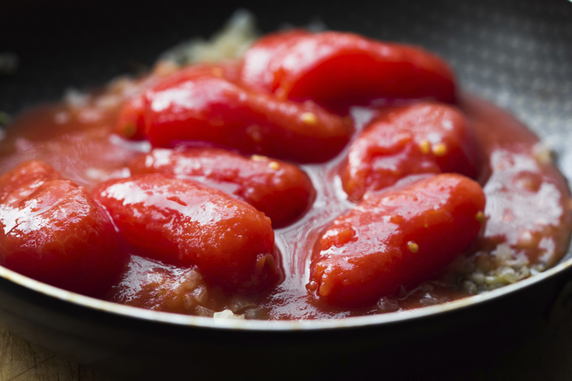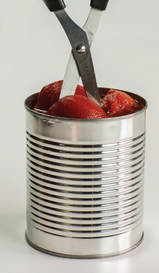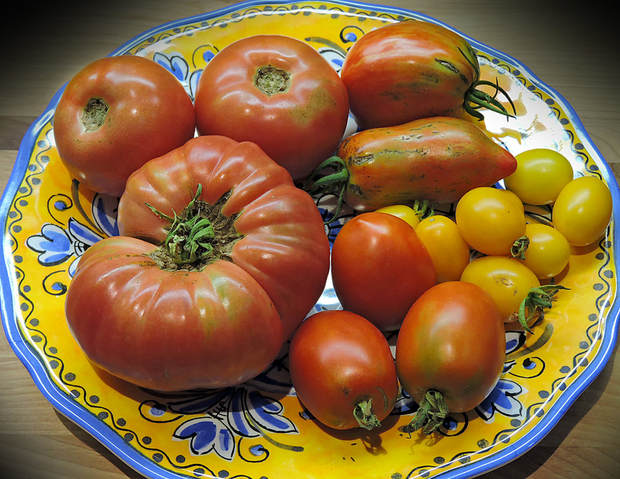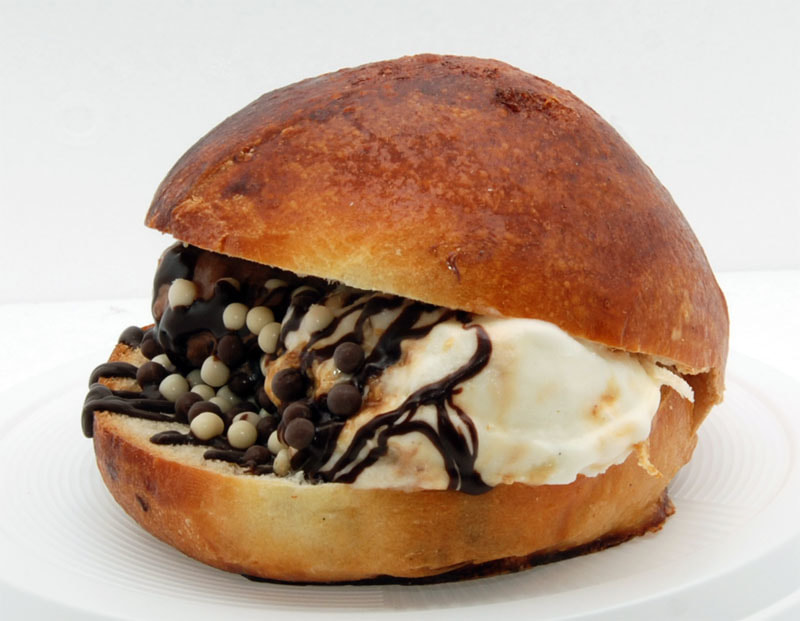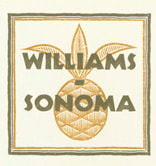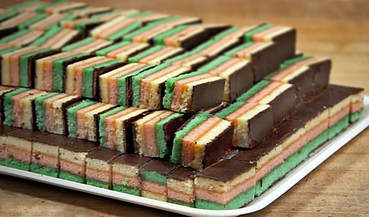
We've all grown up with it... That red white and green, Italian flag colored delight sold as little cookie squares in just about every Italian (and non-Italian) across the United States and Canada. Called a Rainbow Cookie, often called Tricolore because of its resemblance to the Italian flag, and sometimes called Seven Layer Cookies (3 cake, 2 chocolate and 2 jam). Although some say they don't exist in Italy, they do appear in Italian pasticcerie, usually around Christmastime--their red and green colors accenting the holiday cheer. They are also referred to as Venetians, a nod toward the fact they are more pastry than cookie.
They look like a throwback to the psychedelic, tie-dyed days of the 1960s. Topped (and bottomed) with a layer of chocolate, each colored layer flavored with almond paste, with thin coats of apricot or raspberry jam in between, who can resist buying a string-tied, neat little white box of these little dolci? For a couple of decades now, even supermarkets, delis and big box stores like BJs and Costco are offering factory-baked versions of them... it's become one of the more popular, year-round cookies in America, but it's especially popular at Christmas because of the holiday colors.
I recently spoke to Robert Zerilli of Veniero's Pastry shop on the lower east side of Manhattan, an historic Italian bakery famous for many types of pastries. Robert is the great, great nephew of their founder, Antonio Veniero who started the bakery by making biscotti in a former pool hall in 1894.
Commenting on the history of the rainbow cookie, "As for the history of the rainbow cookie I believe it’s representative of the Italian Flag and the United Kingdom of Italy as a country instead of independent Provinces. My father would give me a rainbow cookie when I visited as a child in the mid 60’s and all of our family enjoyed eating them as well." Veniero's makes about 300 lbs of these colored morsels each month, with about 15 cookies in each pound. That number increases around the holidays, Zerilli claims proudly, "So each year, we produce about 3000-3500 lbs!". Veniero’s "Authentic Rainbow Cookie" definitely stands out as one of the best that's enjoyed by folks all over the world.
Italian? Rainbow? Cookie?
First of all, it's not really a cookie. It's more of a triple-layer sponge cake, although some bakeries put so much almond paste into their sponge that they really aren't "cake" any more! They are baked in large sheet pans and meticulously cut into those little squares that we all love. I shouldn't say "all" love them, because I have met people who just don't go for almond/marzipan flavors, even if they are presented with a neon, edible rainbow. That's another thing... it's not really a rainbow, which have seven colors. This delightful pastry creation has only three. And while a rainbow comes from white light being broken up by a prism into colors, this cookie has one white layer to start with. Finally, most claim this recipe is not Italian. They say that it is an Italian-American creation, created to honor the Italian flag by Italian-American bakers. I doubted this, so I did some research... In fact, you can find version called Pasticcini arcobaleno (little rainbow pastries) in Italy during the Christmas season. Besides, nearly every "Italian-American" recipe owes its existence to a recipe from mainland Italy. Perhaps the recipe has changed a bit, its core is Italian. I really can't imagine such a complex pastry preparation coming out of American bakeries alone without any historic link to the traditional recipes of the past. 
Click HERE for a very traditional recipe which uses the technique of a heavy weight and chilling to duplicate an authentic result. And unlike some recipes, both sides are coated with chocolate.
Buon appetito! --Jerry Finzi San Marzano tomatoes are the holy grail when it comes to sauce tomatoes. They often cost twice the price of other canned tomatoes, which is the reason why there are many counterfeit, bogus tomatoes in cans labeled San Marzano, or "San Marzano style". Experts say that up to 95% of the tomatoes labeled "San Marzano" are tomatoes grown in other regions of Italy or other countries. The Italian Mafia and other unscrupulous organizations will place lesser quality tomatoes into cans and label them as San Marzano, when in reality they are a mixture of less sweet, less meaty tomatoes. In was in 2011 that the president of Consorzio San Marzano (Consortium for the Protection of the San Marzano Tomato Dell'agro Sarnese Nocerino) said that only five percent of tomatoes marked as such are certified, D.O.P. San Marzano tomatoes. San Marzano tomatoes are elongated plum tomatoes that by decree, must be grown in Agro Sarnese-Nocerino, an area surrounding Mount Vesuvious near Naples. When they are canned, they come with a D.O.P.-Denominazione d' Origine Protetta (literally “Protected Designation of Origin”) emblem on the label, marking their authenticity. This is the same type of certification that ensures the authenticity of other Italian products, such as Parmigiano Reggiano, Prosciutto di Parma or Balsamic di Molena. To ensure you are getting San Marzano tomatoes, make sure that the can has one of the following on it: "Certified San Marzano", the DOP emblem, or the words "San Marzano dell'Agro Sarnese-Nocerino". The ingredients should list "whole (or peeled) San Marzano tomatoes". Some producers also include a statement something like, "San Marzano tomatoes (DOP-protected designation of Origin) are only cultivated in 41 approved municipalities, from San Marzano seeds, within the Sarno River valley surrounding Naples (or 'near the slopes of Mount Vesuvious'), in the Campania region." If the label says, "Grown in the USA", steer clear. Certified Authentic San Marzano Tomatoes The Phony Stuff 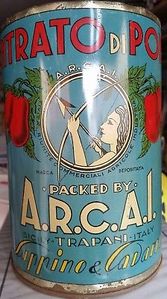 A 1940s era canned tomato that might be San Marzano A 1940s era canned tomato that might be San Marzano Compared to the Roma tomato, San Marzano tomatoes are thinner, a bit longer and pointed at their ends. The thicker, meatier flesh has fewer seeds and is fantastic for making sauce. The taste is also stronger, sweeter and less acidic. (I've had pizza from one local chic, wood oven pizzeria who claimed the tomatoes in their sauce were San Marzano, but the amazingly high acidic level burned my lips. I called BS.) As many know, the tomato itself was imported to Europe after being discovered in the New World. Its first culinary appearance was in a 1692 cookbook as a base for a sauce. The San Marzano itself doesn't show up until much later, in a tomato manual published in 1940, the San Marzano is listed as a "recent cross" between the Re Umberto and Fiaschetto varieties. 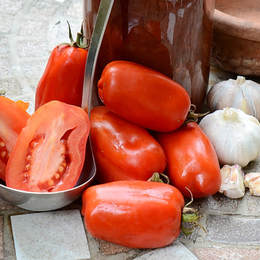 The San Marzano vines are indeterminate type, and have a somewhat longer season than other paste tomato varieties, making them well suitable for warmer climates. Indeterminate tomato plants will keep producing fruit as long as the warm, sunny weather lasts, whereas determinate varieties produce only a set number of fruit on shorter plants, and then die. Many heirloom tomatoes are indeterminate type (like the varieties I grow, producing 8' plants). San Marzano is an "open-pollinated", heirloom variety that breeds true from generation to generation, making seed saving practical for the home gardener or farmer. You can't save seeds from hybrid tomatoes because they cross-pollinate, which results in pot-luck tomatoes appearing on the vine. If you can get some authentic, D.O.P. San Marzano tomatoes while in Campania, save some seeds to plant in your home garden, although they won't have the D.O.P. designation, they will be fairly close the what is grown in Campania. (Of course, you can't exactly match the weather or soil qualities). You can also grow San Marzano seeds purchased from heirloom seed companies, but these wouldn't be from tomatoes harvested in the Sarno Valley area. You will find that even the highly respected Seedsavers Exchange doesn't list any "San Marzano" seeds out of respect for the D.O.P. designation of the originals. So, the next time you're in the Naples neighborhood, buy some San Marzano fruits and save the seeds. There's nothing like home-grown tomatoes, as my father always said... --Jerry Finzi
OK... now this situation is really starting to get to me--and my stomach. There are many so-called "Italian" pages on FB where members proudly post photos of their "culinary creations" (in the same way that the Monster was Frankenstein's "creation"). I'm getting sick of this. Literally. I've decided to shame these repulsive recipes, these disgusting degustations, these less than amusing-bouches...
Here's one I can't even figure out! (And don't really want to know.) --Jerry Finzi I've never been a big fan of cannoli, but I have to admit, THIS Cannoli tower takes the cake! Great idea for a wedding instead of a typical wedding cake.
--Jerry Finzi Clockwise from right: Olivette Juane (yellow egg-shape, mild flavor, great for salads and focaccia) Debarao (2" red plum, good for sauces) Constaluto (this one is just under 1 pound, sweet beefsteak, great paired with smoked mozzarella and basil) Eva Purple Ball (slight purple tinge, flawless, disease/pest resistant, the sweetest, most flavorful tomato I grow!) Roma Speckled (robust, horn-pepper shaped sauce tomato, very meaty and sweet) My heirloom tomato harvest started late this year for various reasons: because of heavy spring rains, we planted out our seedlings about 2 weeks late; a heat wave prevented blossoms from setting fruit; on and off heavy rains caused a growth spurt. We planted 12 different varieties... these five were the first to ripen.
--Jerry Finzi Summer is in full swing, and with Italy currently in the midst of a full blown heatwave, here is an idea from southern Italy that will help you beat the heat...
Brioche Gelato Burgers! More and more popular in Sicily, Puglia and Calabria, the trend is catching on. In the last several years, the sweet, glossy brioche bun has gained popularity in the States, used as the go-to bun for burgers and sliders. But the sweet, soft crumb of the classic brioche also pairs well with gelato (OK, and ice cream, too). Grilling the sliced brioche helps raise the flavor a notch. Toppings or spreads can include, crushed pistachios or sliced almonds, Nutella, Pirouettes crackers, almond biscotti crumbs, whipped cream or zabaglione, or a smear of almond paste. How about a trio of gelato sliders? To add crunch, tuck a pizzelle inside! Stay cool! --GVI |
Archives
May 2024
Categories
All
|


